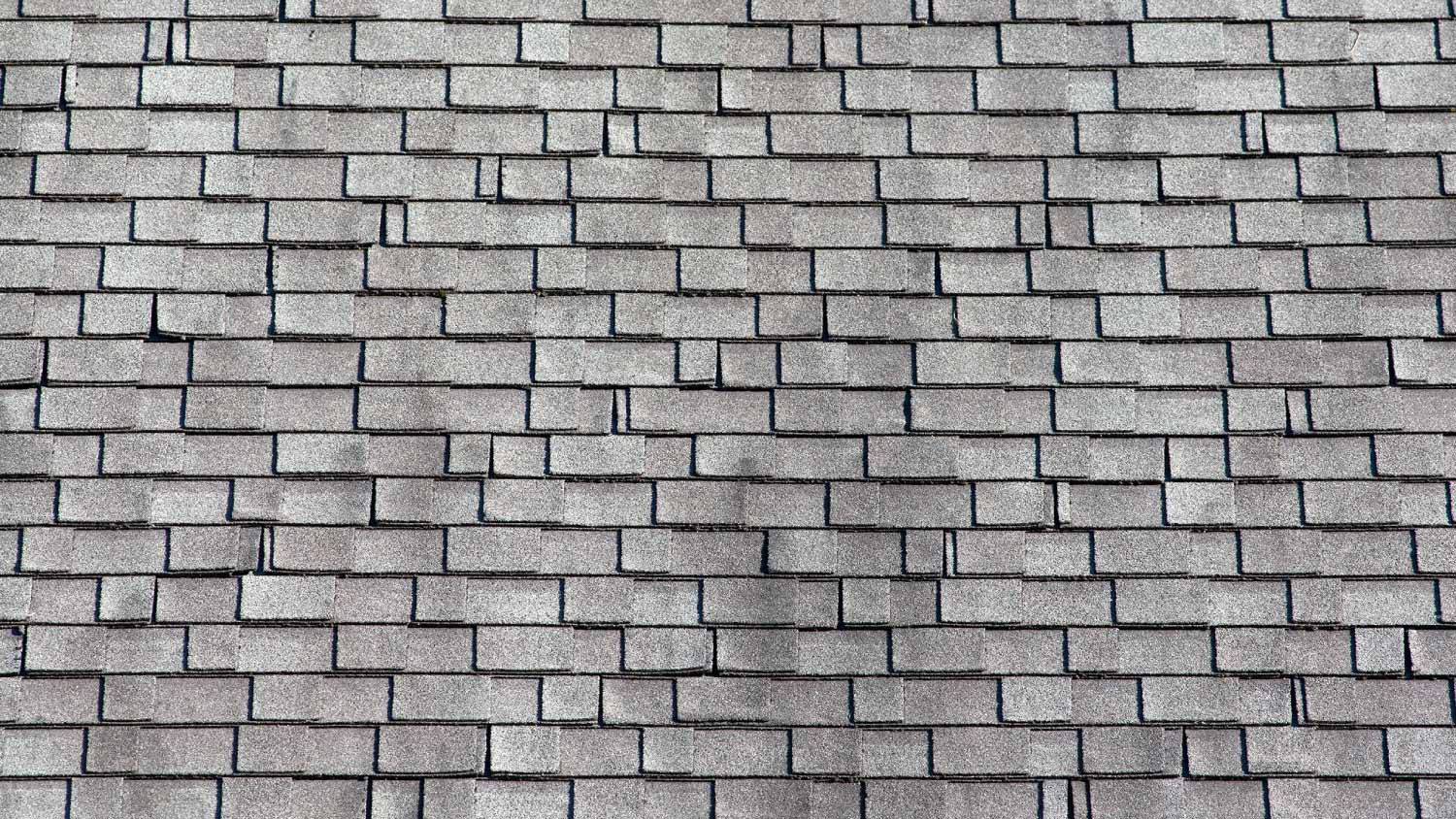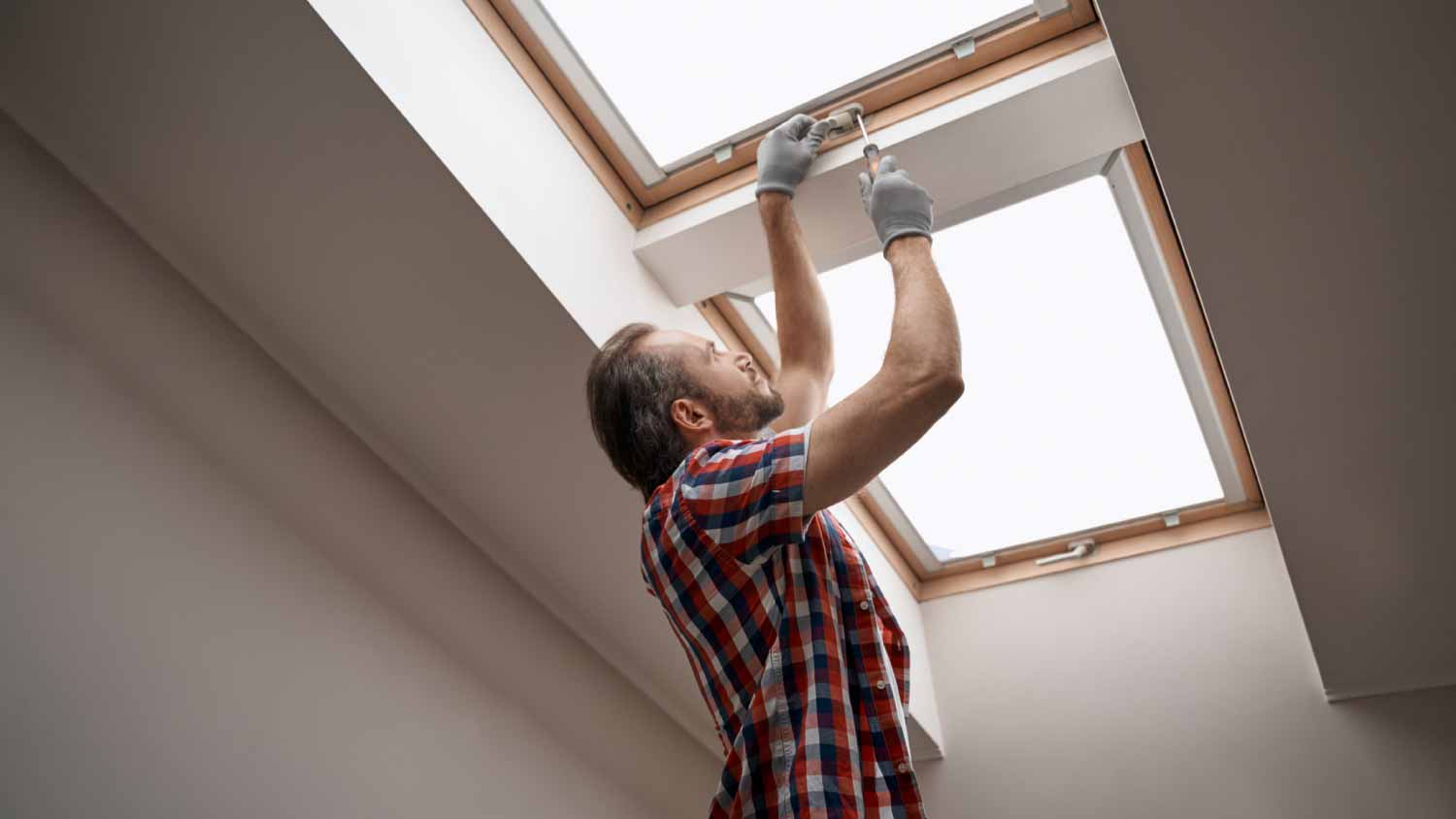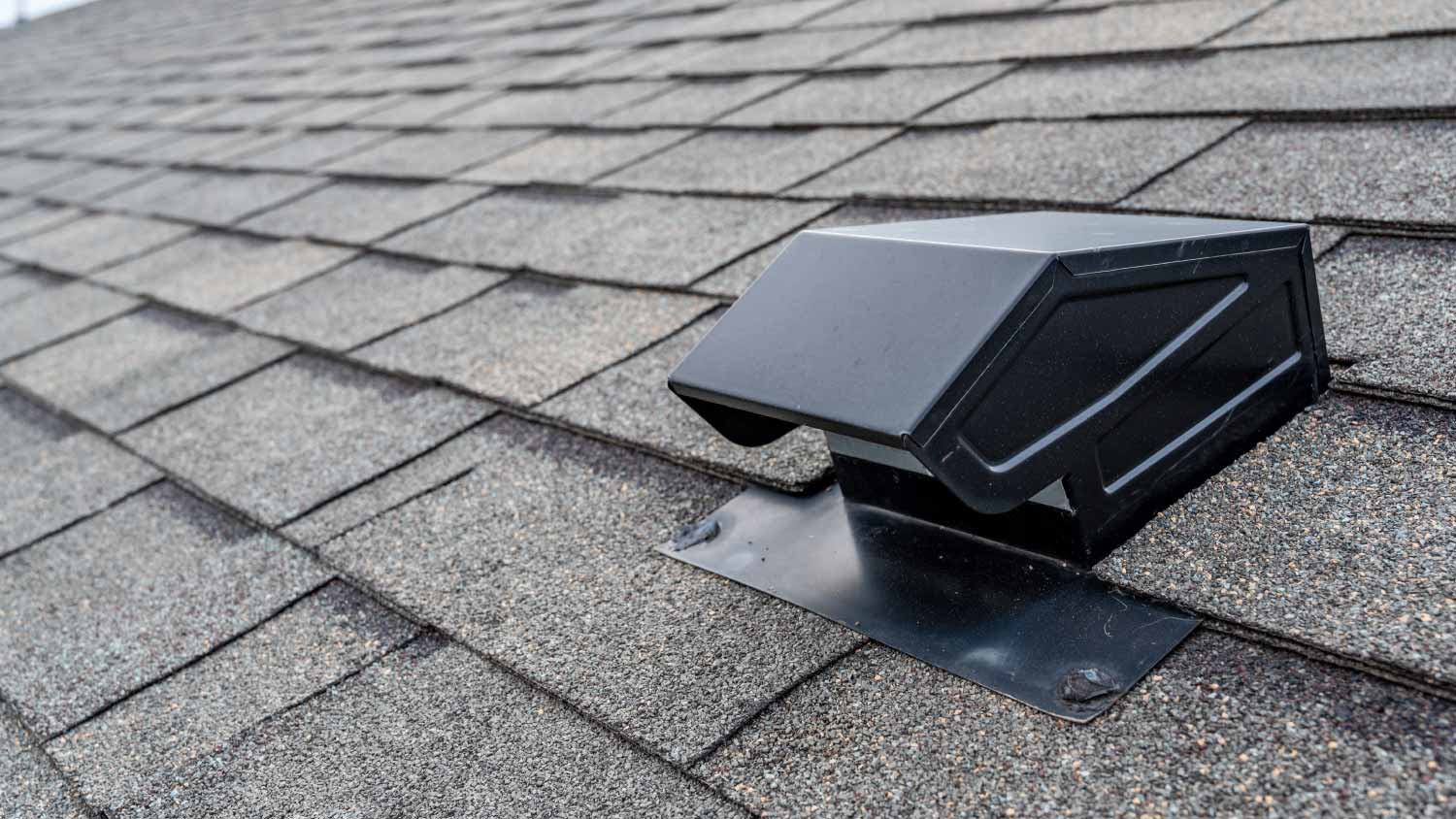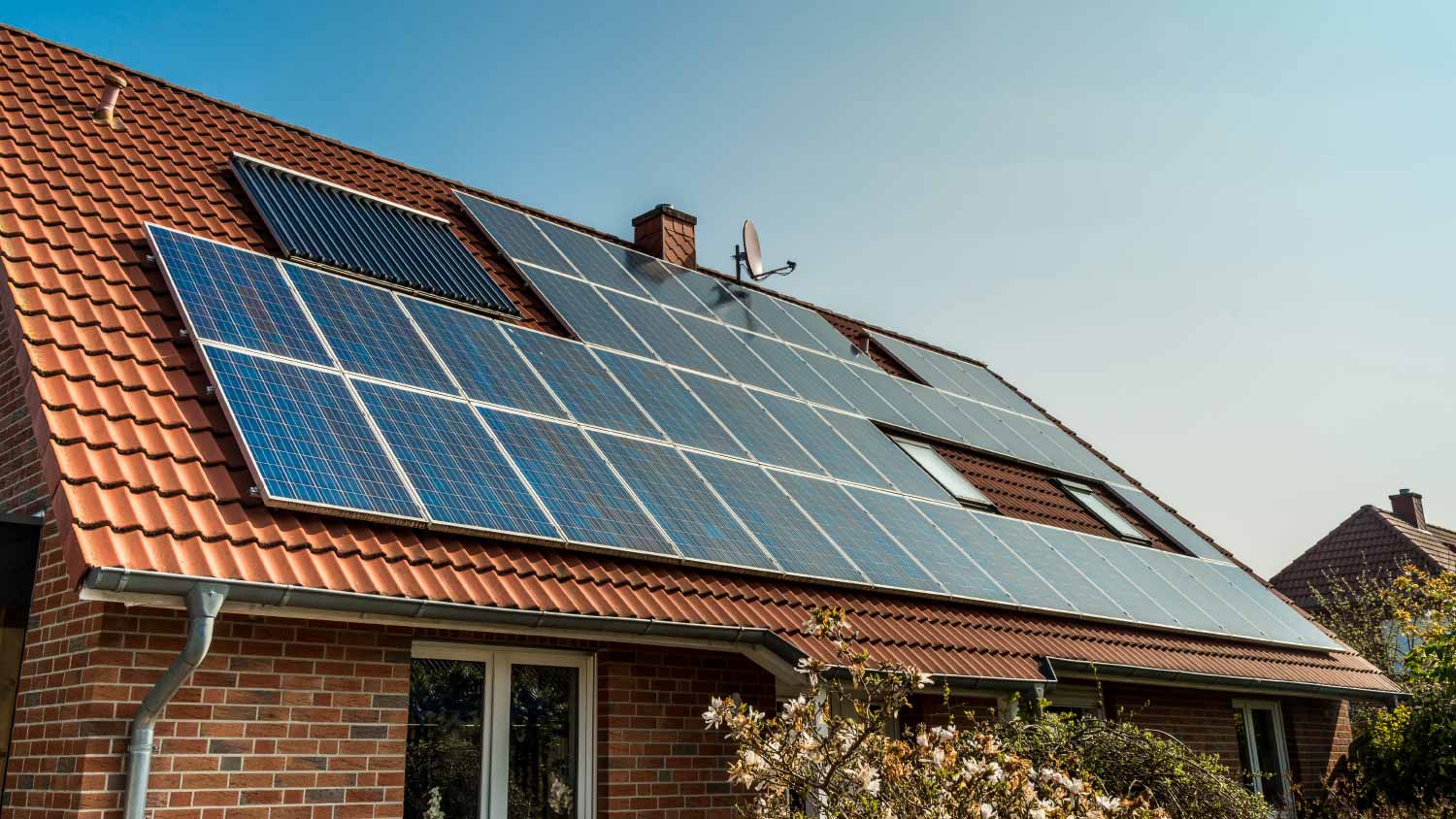
Dealing with a visibly damaged roof or leak? Learn about roof repair costs in Columbus to see how much you’ll need to budget for a permanent solution.
When it rains, it shouldn’t pour, at least not in your living space


Issues with damaged roofing material, failing roof flashing, and clogged gutters are some of the most common causes of roof leaks in heavy rain.
Mitigating interior damage by collecting dripping water and calling for emergency roof repair services is your best course of action.
Roof leaks are complicated to diagnose and fix, so it’s best to leave the work to an experienced professional.
One of the worst things many homeowners can imagine is discovering that their roof leaks in heavy rain, largely because roof leaks are challenging to diagnose and even harder to fix permanently. Understanding the reasons your roof might be leaking can help you determine which professional you should call and direct them toward the problem area more quickly.
In this guide, we’ll explain seven reasons for roof leaks in heavy rain to help you diagnose your issue more accurately.

Roofs see a lot of wear and tear over time as they’re constantly exposed to strong winds, heavy rain, tree branches, snow, and more. Over time, the roof material can get damaged and worn down. Architectural shingles last between 20 and 25 years, so wear and tear could be the culprit if you know your roof is approaching that age. Most homeowners in the U.S. have asphalt shingle roofs, which can sustain damage in a few ways:
Shingles can blow off of the roof, especially in strong winds from tornadoes, tropical storms, or hurricanes.
Shingles can crack from impact and leave your underlayment partially exposed.
Hail damage can create small holes in the shingles that can let water in.
Shingle grit can naturally wear away over time and leave your home exposed.
Unless you have missing or badly cracked shingles, it will be difficult to assess asphalt roof damage from the ground. However, you can look for small dark spots on the shingles following a hail storm, and mismatched shingle colors can indicate that the shingle grit is worn.
If you notice any of these issues, especially if they’re coupled with signs of roof leaks inside your home, you should call a roof leak repair company near you to get a fix in place immediately. You can ask your pro to install a roof tarp as a temporary measure and get an estimate for a permanent repair at the same time.
Roof flashing is usually made of metal and creates waterproof seals where there would otherwise be gaps in roofing materials. There are different types of roof flashing, including pieces that create seals in the valleys between two roof angles, around the base of chimneys and vertical walls that intersect with the roof, and different types of drip edges at the edges of the roof where water drips off.
If the flashing fails, you’ll often only notice signs of water damage from the interior, like water stains on drywall, puddles of water on your floor, increased humidity, or moldy odors.
Contacting a local professional roofer is your best option if you believe the issue is failing roof flashing. Your pro will likely need to carry out more extensive roof repairs than just the flashing alone since it sits partially under your roof material.

Skylights are the most likely type of window to leak because they don’t sit vertically and can pool water around the seals. Skylight leaks are easy to diagnose because you’ll notice clear signs of water damage directly around the window itself. You might notice discolored or moldy drywall, chipping or peeling paint, visible water stains, or actively dripping water during heavy rainfall.
Skylight leaks can occur for a few reasons:
The silicone sealant around the window has dried out, cracked, or sustained damage
The window flashing is failing or improperly installed
The glass is cracked, or the seal around the pane is broken
The weather stripping is compromised (only for skylights that open)
You can call a roofing company to replace your skylight, but we recommend contacting a window repair company near you that specializes in skylights instead, as they have more expertise.
Some things to look for that may indicate you should opt for emergency tarping or roof repair include missing or damaged shingles, interior water leaks, visible damage to the components of the roof, or signs of large debris, like tree branches, on your roof.
It’s easy to think that gutters help avoid roof leaks rather than cause them, but if your gutters are clogged, they could be the culprit of roof leaks in heavy rain. Gutters naturally collect debris that glides off your roof, including leaves, acorns, pollen, other tree debris, and shingle grit.
If you don’t clean your gutters, the debris can build up and prevent proper drainage. If the clog gets bad enough, the water can overflow toward your fascia and behind your soffits. You’re likely to notice signs of a roof leak, like water damage, only around the exterior walls of your home. Those signs include the following:
Water-damaged sheetrock
Mold growth
Wavy soffits
Rotting fascia boards
Chipping or peeling paint on your soffits or fascia
To rectify the immediate problem, call a gutter cleaning company near you to remove the debris. Calling for this service two times a year could eliminate the issue, in which case you’d only need water damage repairs inside. Alternatively, you can call a local gutter guard installation company to install gutter guards that block the debris from entering your gutters or have a professional install heated roof cables to prevent ice dams that can lead to more frequent clogs.

Most roofs have some type of vents running through them, including dryer vents, plumbing vents, fresh air intake vents for HVAC systems, or bathroom fan vents. You need flashing around the vents to prevent leaks, as well as secured caps over the vents to prevent water from entering through the top.
It can be difficult to diagnose flashing issues around vent pipes without getting up on the roof. However, if you can access the interior area where the vent pipe leaves the roof, you should look for mold growth, discolored building materials, sagging insulation, and wet material during rainfall. If the issue is a missing vent cap, you can often see the problem from the street—just look at any vents on your roof and check to see if they have a large cover on them.
If you discover a roof vent leak is the problem, you should call a roofing company to rectify the issue. A roofing pro can install new flashing or re-cap your vent to stop your roof from leaking in heavy rain.
If you have a metal roof, there will be screws and watertight washers that hold the roof material to the roof deck. Over time, these fasteners can rust or loosen, allowing water to enter under the roofing material and potentially soak into the building material beneath the underlayment.
You might notice small patches of discoloration, moldy drywall, or water stains inside your home under the leak. From the outside, look for rust spots, particularly around the fasteners. Since the signs are less obvious than they might be with other issues, you might need to hire a roof inspector to identify problems with roof fasteners.
A local roofing company is your best option for a professional who can fix this problem. They’ll usually replace sections of your roof or install new fasteners that create the watertight seal again.

Homeowners with rooftop solar panels may also find water entering their homes through the roof penetrations required for solar panel installation. These should have complete seals, but you might experience leaks if your installer makes an error.
If leaking solar panels are the problem, you’ll often find small spots of water damage on your ceiling or attic. Check for discolored or wet drywall on your ceilings, visible mold growth, and musty odors in your home. If you can access your attic, look around the fasteners coming through your roof deck to check for discoloration, wet building material, soggy insulation, and mold growth.
You can check your installation paperwork to see if your system has a workmanship warranty. If it does, it’s best to call your installer to report the problem. Otherwise, you can call a local solar panel repair company to fix the problem. You might also need a roofing professional to repair the roof material and decking.
From average costs to expert advice, get all the answers you need to get your job done.

Dealing with a visibly damaged roof or leak? Learn about roof repair costs in Columbus to see how much you’ll need to budget for a permanent solution.

Learn about roof replacement costs in Columbus and what factors are at play to budget accurately and make sure you’re getting a fair price.

A metal roof can defend your home against Ohio’s varying weather conditions. Learn how much a metal roof costs in Columbus, OH.

Sharpen your skills and smooth your cuts with this DIY guide to cutting metal roofing. We cover everything from measurements and safety gear to which tools will give you the cleanest cut.

Homeowners can fill a gap between their roof and wall with sealant or wire mesh. Here are three steps to help you get the project done safely.

What's a cupola? Is it possible to have one on my home? What do they look like? Learn all about the variety of cupolas you can add to your home or barn.